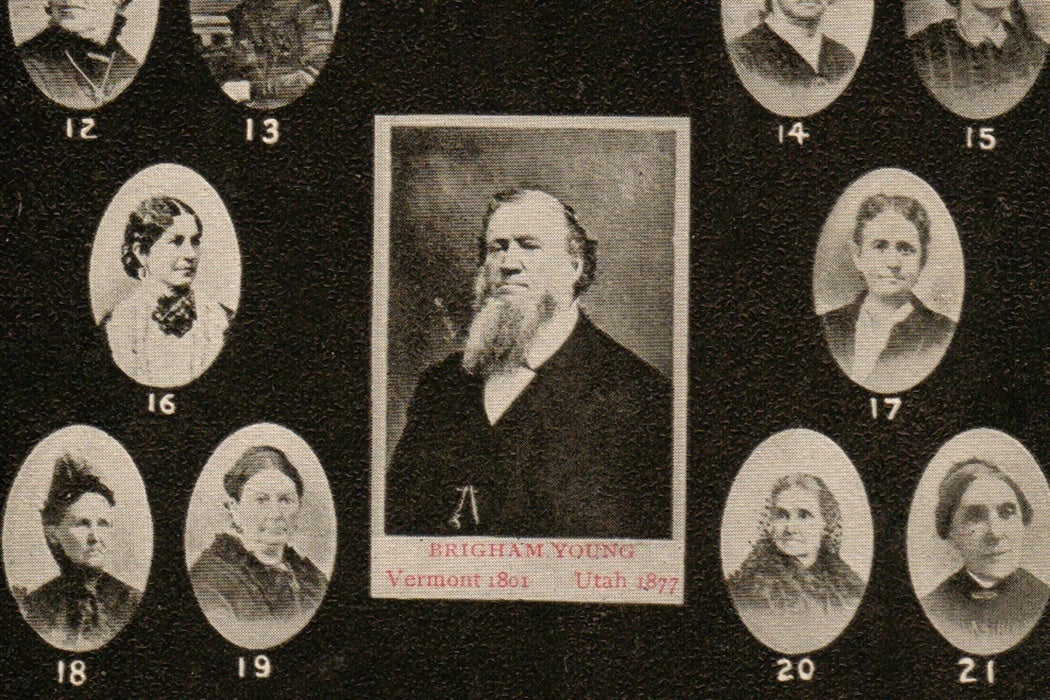Brigham Young, born June 1, 1801 in Vermont, made his mark as the American Moses who led his people, The Church of Jesus Christ of Latter-day Saints popularly known as Mormons, to the “New Jerusalem” established in Salt Lake City.
Young was the second Mormon leader, elected to his position as president after the murder of Joseph Smith, the founder. The Mormons faced persecution wherever they settled, from upstate New York, to Illinois, to Missouri, only to find security under Young’s leadership in the wide-open territory of Utah, first under Mexican control and then under the authority of the United States.
Young was a central figure in what was perhaps the second most contentious debate, after slavery, to inflame the American public of the nineteenth century. Young, who married as a young man only to be widowed soon after, was a polygamist, taking on dozens of wives (although historians debate how conjugal each relationship was). Young said that polygamy was necessary “so that the noble spirits which are waiting for tabernacles might be brought forth,” a reference to how Mormons view the afterlife. According to historian Charles A. Cannon, the debate over polygamy became central to Mormon identity, particularly after Young publicly espoused the practice in 1852. Opponents used the institution to rebuff efforts to bring Utah into the American union.
The 1856 Republic Party platform condemned both slavery and polygamy. President Grover Cleveland in an address to Congress extolled the values of the American family, with the clear exception of Mormons. (Cleveland himself later scandalized the American public by fathering a child out of wedlock.)
Why the outrage against polygamy? Cannon argues that by offering an alternative to monogamy, Mormons threatened what was seen as the ideal family life of Victorian America. Cannon also argues that in a repressed era, speakers and writers who condemned Mormon polygamy were able to explore otherwise taboo notions about sexuality. Magazine authors argued that sexuality was man’s most wild impulse and that polygamy threatened to indulge insatiable desires.
Despite all the lasciviousness implied by its critics, Mormon polygamy, according to historians, was grounded in traditional principles based on the Old Testament, which provided for men to take multiple wives. Cannon argues that Mormon sexual ethics were actually comparable to other Americans of their time. Mormons prohibited adultery. They also believed, as others did, that male semen should not be wasted in acts not directed to procreation.
Other historians see the Mormon idea of polygamy in the context of the sexual and family life experimentation prevalent in nineteenth-century American life. Some utopian communities loosened traditional marriage bonds. Others, like the Shakers, promoted celibacy. Many Christians believed that the end times were near and that only massive propagation would save the species, which also contributed to the Mormon defense of polygamy.
Weekly Digest
While its critics argued that polygamy encouraged male sexual excess, its defenders argued the opposite. Mormons believed that sex during pregnancy resulted in sick babies, and argued that it was better for men to have other alternatives than to force themselves upon their monogamous pregnant wives. Mormon leaders argued that men were less inclined to spiritual lives than women, so the supply of available upright husbands was limited. They also said, true to the beliefs of the day, that men were more sexually inclined than women.
Young always wanted polygamy to be part of the wider culture. He called it “one of the best doctrines ever published.” But this was not to be. Twenty years after his death, Utah was admitted into the Union, and in exchange, the Mormon leadership officially abandoned polygamy as an official practice. Today, The Church of Jesus Christ of Latter-day Saints is a strong proponent of traditional, monogamous, heterosexual marriage.
Ed. Note: an earlier version of this referred to “The Church of Latter Day Saints;” the religion’s official name is actually “The Church of Jesus Christ of Latter-day Saints.”







